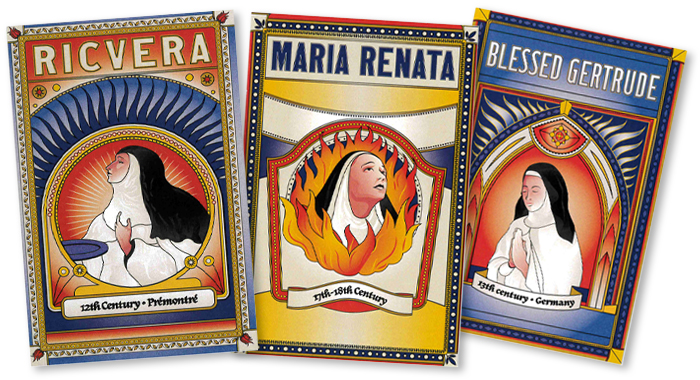Norbertine Women Who Defied Tradition and Inspire Faith
Women have long been an integral part of the Norbertine mission, spanning centuries of history and devotion. From the earliest days of the 900-year-old order, women stood alongside their male counterparts, living and working together in a spirit of equality and shared purpose at Prémontré in northern France.
Over time, the structure of the Norbertine communities shifted toward separate convents and monasteries, leading to a relative decline in the prominence of Norbertine women in the order’s history. However, their unwavering dedication and extraordinary stories remain as influential as ever. Today, there are 225 Norbertine women spread across 14 countries worldwide, with new and flourishing communities in California.
The stories of several extraordinary Norbertine women continue to inspire and embody the Norbertine mission, from the first woman to make her vows, Blessed Ricvera of Clastres, to the last woman to be executed for witchcraft in Bavaria, Sister Maria Renata Saenger von Mossau, to the devoted servant of the poor, Sister Maria Rosa del Cristo Rey. Their legacies are a testament to the enduring commitment of women within the Norbertine tradition, and they continue to inspire today’s communities of Premonstratensian canonesses, sisters and nuns.
Blessed Ricvera of Clastres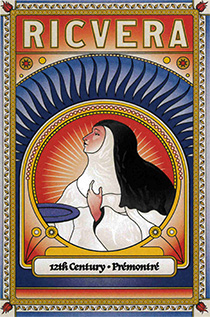 Died: 1136 at Prémontré
Died: 1136 at Prémontré
From: Clastres, northern France
Spiritual home: Prémontré
Famous for: Being the first woman to make her vows as a Norbertine
Equally remarkable for: Her devotion to the poor
Ricvera of Clastres, widow of Raymond of Clastres, was the first woman to join Norbert’s new order in 1121, when men and women were accepted on equal terms. The early Norbertines lived in “duplex” monasteries with shared but segregated quarters.
Ricvera devoted her life to caring for the poor in the hospital at Prémontré, the first expression of that radical hospitality for which the Norbertine order would become known. Before Norbert and other reformers came on the scene, it had not been automatic for the Church to concern itself with the poor, or to challenge the huge gaps in wealth created by the feudal system. The Norbertines were deeply committed to social justice and taking care of the poor; in double monasteries it was the women who did the actual work involved, relying on male canons to deal with the outside world as well as to deliver the sacraments.
Images of Ricvera often show her with a crown (representing royalty), a money bag (almsgiving), bread (food for the poor), or roses (which bloomed on her grave). Her dying wish in 1136 — just two years after Norbert’s death — was to be buried with her beloved poor rather than in the part of the cemetery especially set aside for Norbertines.
After Ricvera’s death, the Norbertine order moved away from life in integrated communities. Women ran their own convents. As they took up the roles that had been filled by men in their former monasteries, they also needed to secure the education that prepared them for such service.
Blessed Gertrude of Altenberg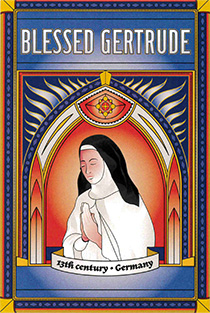 Born: 1227 in Trier, Germany
Born: 1227 in Trier, Germany
Died: 1297 in Altenberg, Germany
Spiritual home: Altenberg Abbey, where she lived from the age of 2 and became prioress at 24
Famous for: Being the daughter of a saint (Elizabeth of Hungary) and a crusader (Louis of Thuringia and Hesse)
Equally remarkable for: Helping to establish the new feast of Corpus Christi
There was never any question about the direction Gertrude of Altenberg’s life would take. Her father dedicated her to God while she was in the womb, as he left for the Crusades. Her mother, Elizabeth of Hungary, died a few years later, but had already sent Gertrude to the priory at Altenberg. Elizabeth was canonized when Gertrude was 8; Gertrude would later collect her own mother’s relics.
During the 50 years of Gertrude’s leadership, the community of Norbertine sisters at Altenberg attracted many women among the nobility and grew in status. Gertrude built the monastery church, hospital and poorhouse with her family money, and she devoted herself to the poor.
Just like Norbert himself, this early leader in the order was celebrated for her ability to reconcile opposing factions. There is a legend about her taming an escaped lion while trying to deal with two feuding sisters, using the creature as an example of the obedience she required. She is sometimes portrayed with a lion at her feet, as well as a crown for nobility and the Eucharist for her devotion to the feast of Corpus Christi. The Church was divided about the new feast, but Gertrude made sure Altenberg was the first to celebrate it in 1270.
Sister Maria Renata Saenger von Mossau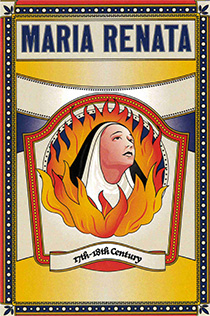 Born: c1680
Born: c1680
Died: c1749
Spiritual home: Unterzell, Bavaria
Famous for: Being the last woman to be executed for witchcraft in Bavaria
Equally remarkable for: Enduring 16 separate interrogations before her trial, after which she was condemned to execution
Maria Renata Saenger von Mossau, daughter of an imperial military officer, spent most of her life in the convent of Unterzell. She had a reputation for piety and was appointed sub-prioress in 1740, but attracted envy and resentment from her sisters and was blamed for misfortunes such as bad harvests and illness.
The case against her was built when a sister at Unterzell suffered from “convulsions” (possibly epilepsy) and six more sisters were said to be “obsessed.” After months of imprisonment and interrogation, Maria Renata was handed over to a secular court. Lay people were not allowed to pass judgment on members of religious communities; to get around this edict, she was not allowed to wear her habit during the trial. In fact, secular officials were overruled by clergy (including Norbertines) when they asked for a stay of execution. Maria Renata’s own Norbertine brothers did not support her. She was condemned to be beheaded and her body then burned.
The Center for Norbertine Studies at St. Norbert College owns a copy of a contemporary sermon by Father Georg Garr, published in 1754, which seeks to justify Sister Maria Renata’s fate: a fate shared by outspoken and intelligent women through history. Her story became a scandal throughout mid-Germany and Northern Italy and prompted the end of witchcraft trials.
Sister Marie Odiot de la Paillione/Mother Marie of the Cross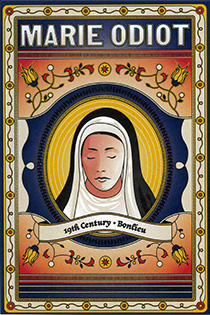 Born: 1840 in Toulouse, France
Born: 1840 in Toulouse, France
Died: 1905 in Grimbergen, Belgium
Spiritual home: Bonlieu, France
Famous for: Her writing, which advocated for God in a newly republican France and recorded 19th-century religious life and controversies from the female perspective
Equally remarkable for: Her strength and independence; she re-established Norbertine nuns in Bonlieu after more than 300 years, then led her community to safety in Belgium
Marie Odiot de la Paillione was born into an aristocratic family at a time when French Norbertines were regrouping after the French Revolution had destroyed all 92 houses. Since Norbert’s death, it had been common for men and women to be separated within the order. Not all convents flourished as separate communities: Bonlieu, one of only two in France, had closed in the 1500s.
Marie joined a Cistercian community for her novitiate, but was determined to reclaim Bonlieu as a Norbertine convent. She bought and restored it with her own family money. She found a mentor in the Rev. Edmond Boulbon, the first abbot of the restored Frigolet Abbey. However, her letters reveal frequent clashes. Marie gathered support from her bishop and other abbots. When Boulbon refused to grant Bonlieu the statutes followed by most Norbertines, Marie spent six weeks in the Netherlands translating them.
In 1901, the Bonlieu sisters were forced to leave France because the government refused to recognize them. They settled in an abandoned chateau near Grimbergen Abbey in Belgium. Marie died within a few years, but her sisters spent nearly 30 years there.
Sister Maria Rosa del Cristo Rey (Rosaura Vidal Martinez)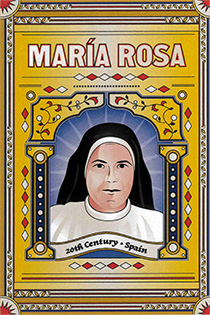 Born: 1927 in León, Spain
Born: 1927 in León, Spain
Died: 1988 in Toro, Spain
Famous for: A lifetime of service to the canonesses of Santa Sofía in Toro, including 17 years as prioress
Equally remarkable for: Her work in feeding the poor in the aftermath of the Spanish Civil War
Maria Rosa del Cristo Rey arrived at the Santa Sofía convent, a cloistered community that still flourishes today, at the age of 18. She took her vows five years later. Like Norbert, she was prepared for every good work and filled a variety of roles including gatekeeper (distributing food to needy families), pastry chef, novice mistress and director of the sewing room.
In 1966, she was sent to Bonlieu in France, the convent founded by Marie Odiot, to help the mainly elderly community there. She stayed for five years, and on returning to Santa Sofía was elected prioress. Under her guidance, the community flourished: The sisters were given more responsibilities in the liturgy; the tailoring business boomed; and the convent and church, which the Sofías had occupied since 1316, were renovated. (Tailoring remains the convent’s main income today.)
Maria suffered from a long and painful illness before her death in 1988. She wrote in her spiritual notes, “I have a need to be at the foot of the Cross a lot, in order to gaze upon and admire Jesus, and to be able to learn from him, and to die like him.”
Norbertine women today
In 1997, the Norbertine fathers of St. Michael’s Abbey founded the Bethlehem Priory of St. Joseph in the Tehachapi Mountains of southern California. This community of Norbertine canonesses has grown from five founding members to more than 40 women who lead a cloistered life of prayer, contemplation and work, centered on the celebration of the Sacred Liturgy. They support themselves with a wide range of activities that include dairy farming and cheese-making. They grow organic vegetables, breed and train puppies, and operate the monastery’s gift shop and bookstore.
The Congregation of Norbertine Sisters, meanwhile, traces its U.S. origins to 2011 but its founding to 1902 by the Rev. Vojtech Frejka of the Abbey of Strahov in Prague. Ten years ago, the Norbertine sisters expanded beyond the borders of Europe upon accepting an invitation from St. Michael’s Abbey to start a new community in Orange County, Calif. Three sisters traveled from Slovakia to Wilmington, a neighborhood of Los Angeles. The Wilmington community has since grown and expanded to a second convent in nearby Costa Mesa. Their daily life centers on Mass, praying the Divine Office and Eucharistic Holy Hour. These sisters are also active in ministry, teaching in Catholic schools, providing religious education to children and adults, and alleviating poverty through a program that provides food and clothing to more than 700 families.
The inspiration for this article came from a lecture series offered as part of the Year of Norbertine Women, a program led by the Center for Norbertine Studies during the 2019-20 academic year. The series was researched, prepared and led by Rosemary Sands, then-director of the Center for Norbertine Studies. This article would not have been possible without Sands’ generosity with her material or without the wonderful graphics created by Sam Kalies ’19, who designed collector cards and buttons that were used to promote the series.
Oct. 25, 2023





